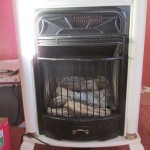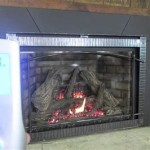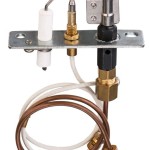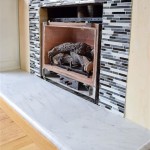Stone Fireplace on Patio: An Enduring Centerpiece for Outdoor Living
A stone fireplace on a patio transcends mere functionality, evolving into a captivating architectural element that defines outdoor living spaces. The incorporation of a stone fireplace provides not only warmth and light but also a sense of permanence and sophistication that elevates the aesthetic appeal of any patio. Careful consideration of design, materials, and construction is essential to create a lasting and enjoyable outdoor feature.
Design Considerations for a Stone Patio Fireplace
The design phase is crucial for ensuring the stone fireplace seamlessly integrates with the existing patio and landscape. A well-designed fireplace becomes a focal point, enhancing the overall ambiance and functionality of the outdoor space. Several key factors need meticulous attention during this stage.
First, the scale of the fireplace must be proportionate to the size of the patio. A fireplace that is too large can overwhelm the space, while one that is too small might appear insignificant. Accurately measuring the patio area and considering the surrounding landscape is paramount. Factors such as the height of surrounding trees and buildings should be taken into account to ensure the fireplace does not appear out of place.
Second, the style of the fireplace should complement the architectural style of the house. A modern home might benefit from a sleek, minimalist design using smooth, uniform stones, while a more traditional home might call for a rustic design with rough-hewn stones. The design may include features such as a raised hearth, a mantel, and decorative stone accents to further enhance its aesthetic appeal.
Third, the intended use of the fireplace should influence the design. If the fireplace is primarily for providing warmth, the dimensions of the firebox and the height of the chimney are critical. If the fireplace is intended for cooking, the inclusion of a grill or cooking surface should be integrated into the design. Thoughtful planning for storage of firewood nearby is also a practical consideration.
Beyond these core design elements, safety considerations are paramount. The fireplace should be positioned away from flammable materials such as wooden fences, overhanging branches, and outdoor furniture. Local building codes and regulations should be consulted to ensure compliance with safety standards. The design should also incorporate features that prevent sparks from escaping, such as a spark arrestor on the chimney.
Finally, consider incorporating built-in seating around the fireplace. A stone bench or integrated seating area provides a comfortable and inviting space for socializing and enjoying the warmth of the fire. Planter boxes or other decorative elements can be integrated into the design to further enhance the overall aesthetic appeal.
Material Selection for a Durable and Appealing Stone Fireplace
The choice of stone is not merely an aesthetic decision but also a practical one, influencing the durability, longevity, and overall appeal of the fireplace. A wide variety of natural stone options are available, each with unique characteristics that make them suitable for different climates and design preferences.
Granite is a popular choice due to its exceptional durability and resistance to weathering. It is a dense, hard stone that can withstand extreme temperatures and harsh environmental conditions. Granite is available in a wide range of colors and textures, allowing for a variety of design possibilities. Its non-porous nature also makes it resistant to staining and easy to clean.
Limestone offers a softer, more textured appearance compared to granite. It is a sedimentary rock that is relatively easy to work with, making it a popular choice for intricate designs. Limestone is naturally porous, so it may require sealing to protect it from staining and water damage, especially in climates with frequent rainfall.
Sandstone is another sedimentary rock that is known for its warm, earthy tones. It is a relatively soft stone that is easy to carve and shape, making it ideal for creating rustic or natural-looking fireplaces. Like limestone, sandstone is porous and susceptible to staining, so sealing is recommended.
Fieldstone is a term used to describe naturally occurring stones found on the surface of the land. Fieldstone fireplaces often have a rustic, natural appearance, with stones of varying sizes and shapes. The availability of fieldstone depends on the local geology, and it can be a cost-effective option for homeowners in certain regions.
In addition to natural stone, manufactured stone veneers are also available. These veneers are made from concrete or other materials and are designed to mimic the appearance of natural stone. Manufactured stone veneers are lighter than natural stone, making them easier to install, and they are typically less expensive. However, they may not have the same durability or longevity as natural stone.
When selecting the stone, consider the climate and environmental conditions in your area. Some stones are more resistant to weathering, moisture, and freeze-thaw cycles than others. Consult with a stone supplier or contractor to determine the best type of stone for your specific location.
Regardless of the stone choice, mortar is essential for holding the stones together. The type of mortar used should be compatible with the type of stone. A durable, weather-resistant mortar is crucial for ensuring the longevity of the fireplace. Regularly inspect the mortar joints and repair any cracks or damage to prevent water penetration and structural issues.
Construction and Installation of a Safe and Functional Stone Fireplace
The construction and installation of a stone fireplace is a complex process that requires specialized skills and knowledge. It is highly recommended to hire a qualified mason or contractor with experience in fireplace construction to ensure the project is completed safely and effectively.
The first step in the construction process is to build a solid foundation. The foundation should be deep enough to extend below the frost line to prevent the fireplace from shifting or cracking due to freezing temperatures. The foundation should be made of concrete and reinforced with steel rebar. The dimensions of the foundation should be slightly larger than the base of the fireplace to provide adequate support.
Next, the firebox is constructed. The firebox is the chamber where the fire burns, and it must be built of fire-resistant materials such as firebrick. Firebrick is designed to withstand extremely high temperatures without cracking or deteriorating. The firebox should be properly sized to accommodate the desired size of the fire. A damper should be installed at the top of the firebox to control the airflow and prevent drafts when the fireplace is not in use.
The chimney is a critical component of the fireplace, responsible for drawing smoke and combustion gases away from the firebox. The chimney should be built of fire-resistant materials such as firebrick or clay flue liners. The height of the chimney should be sufficient to create adequate draft. Local building codes typically specify the minimum height requirements for chimneys.
Once the firebox and chimney are constructed, the stonework can begin. The stones should be carefully selected and arranged to create the desired aesthetic effect. Each stone should be properly mortared and securely attached to the foundation and surrounding stones. The mortar joints should be filled completely and smoothly finished to prevent water penetration.
During the construction process, it is essential to ensure that the fireplace is properly insulated to prevent heat loss and protect surrounding structures from fire hazards. Insulation can be installed behind the firebox and around the chimney to minimize heat transfer. Proper ventilation should also be provided to ensure adequate airflow around the fireplace.
After the fireplace is completed, it should be thoroughly inspected to ensure that it is safe and functional. A professional chimney sweep can inspect the chimney for obstructions and ensure that it is properly drawing smoke. The fireplace should be tested with a small fire before being used extensively.
Regular maintenance is essential for ensuring the longevity and safety of the stone fireplace. The chimney should be cleaned annually to remove creosote buildup, which can be a fire hazard. The mortar joints should be inspected regularly and repaired as needed. The stones should be cleaned periodically to remove dirt and stains.
By carefully considering the design, materials, and construction process, a stone fireplace can become a stunning and functional centerpiece for any patio, providing warmth, ambiance, and a gathering place for years to come. The enduring appeal and inherent beauty of natural stone ensure that a well-crafted fireplace will enhance the value and enjoyment of outdoor living spaces for generations.

Should I Install A Patio Fire Pit Or Fireplace In My Backyard

The Outdoor Patio Fireplace Homeside To Poolside Stones

Outdoor Stone Paver Firepits Fireplaces Installer Minneapolis St Paul

Outdoor Fireplace Ideas Inspiration Dutchies Stoneworks

Outdoor Patio Fireplace Kitchen Furniture Stonewood S

5 Most Common Questions About Outdoor Fireplaces

Pull Up A Chair And Light The Night 15 Natural Stone Fireplaces Fire Pits Swenson Granite 100 Stones

30 Outdoor Fireplace Ideas Cozy Fireplaces

Outdoor Fireplaces From System Pavers

5 Things To Ask Yourself Before Adding An Outdoor Fireplace Dutchies Stoneworks
Related Posts








